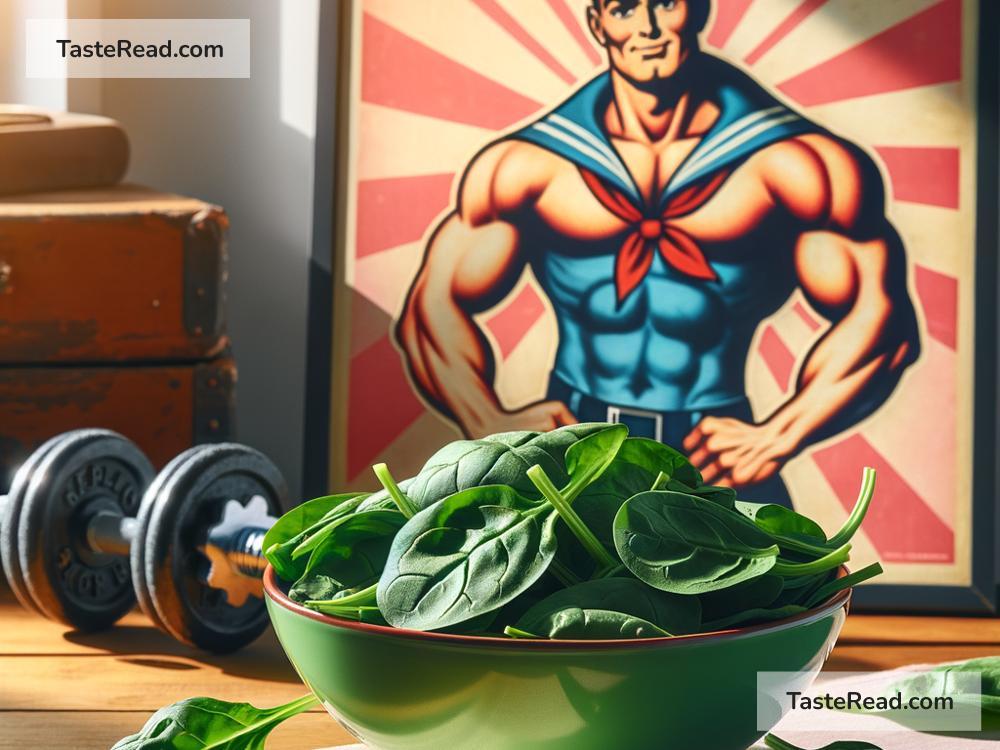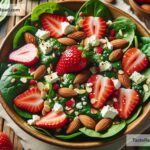How Spinach Became a Symbol of Strength and Vitality
Spinach is one of the most famous vegetables in the world. Known for its deep green color and leafy texture, spinach is celebrated as a symbol of strength and vitality. But have you ever wondered how this humble vegetable got such a powerful reputation? Let’s dive into the story behind spinach and why it’s associated with strength, energy, and health.
Spinach and Its Nutritional Powers
First, let’s talk about the vegetable itself. Spinach belongs to the leafy greens family and is packed with nutrients. It’s rich in vitamins like A, C, and K, as well as minerals such as iron, magnesium, and calcium. It’s also low in calories but full of antioxidants that help protect your body from harmful substances. For centuries, people have eaten spinach for good health, but its status as a “superfood” truly began in the modern age.
Spinach is particularly famous for its iron content. While it doesn’t have as much iron as once believed (more on that later), it still provides a good amount of this important mineral. Iron helps the body transport oxygen in the blood and is essential for energy and muscle strength. This connection between spinach and iron played a key role in its rise as a symbol of strength.
The Spinach-Mistake That Changed Everything
The story of spinach becoming a “strongman’s food” involves an interesting error. In 1870, a German chemist named Erich von Wolf was studying the nutritional content of spinach. When he published his findings, he accidentally misplaced a decimal point. According to his mistake, spinach contained 10 times more iron than it actually does! He reported that 100 grams of spinach had 35 milligrams of iron instead of the correct 3.5 milligrams.
This mistake wasn’t corrected for decades, and the myth of spinach being extraordinarily rich in iron spread throughout the world. People began to believe that eating spinach would give them superhuman strength, almost like lifting weights with your fork. Even though scientists later fixed the error, by that time, spinach’s reputation as a muscle-builder was already firmly established.
Spinach in Pop Culture: Popeye the Sailor Man
If there’s one reason spinach became a global symbol of strength, it’s because of the famous cartoon character Popeye the Sailor Man. Introduced in 1929, Popeye was a comical, scrappy sailor who had one secret weapon: spinach. Whenever Popeye was in trouble or needed to defeat his enemies, he would eat a can of spinach and instantly gain incredible strength.
Popeye didn’t just lift heavy objects after eating spinach; he performed feats of superhuman strength, like punching through walls or carrying large ships. Spinach’s association with power and vitality reached new heights thanks to this cartoon. Kids loved Popeye, and parents encouraged their children to eat spinach because of the message in the cartoon.
Interestingly, Popeye’s creators didn’t choose spinach because of its amazing nutrient profile. They chose it due to the exaggerated belief (based on the decimal-error) that spinach was the king of iron-rich vegetables. Whether it was accidental or intentional, the connection stuck.
Spinach’s Role in Health Movements
Beyond cartoons, spinach played a big role in the health movements of the 20th century. People became more interested in nutrition, and spinach was recommended as part of a balanced diet. Doctors and nutritionists highlighted its role in improving energy, helping the immune system, and supporting strong bones and muscles.
Today, spinach continues to be a symbol of health food. Smoothies, salads, and soups commonly include spinach because of its versatility and rich nutrient content. Even fitness enthusiasts swear by spinach for its ability to support their goals, like building muscle or recovering after workouts.
Modern Science and Spinach’s Actual Strength
While spinach might not be as magical as Popeye made it seem, modern science still proves that it’s a smart addition to your diet. Fresh spinach contains phytonutrients (plant chemicals) like lutein and zeaxanthin that protect your eyes and support brain health. It’s also loaded with fiber, which aids digestion and keeps you feeling full longer.
Don’t forget that spinach isn’t just about iron. It has other nutrients that support different aspects of your health — from skin and hair to energy levels and disease prevention. That’s why it’s a favorite among both chefs and nutritionists.
Final Thoughts
Spinach has a fascinating story. What started as a decimal error turned into a cultural phenomenon that continues today. Whether it’s its cartoon fame with Popeye or its legitimate status as a nutrient-packed vegetable, spinach has earned a place in our hearts and minds as a symbol of strength and vitality.
So, the next time you add spinach to your meal, remember that you’re eating a food with an interesting history. Think about its connection to iron, Popeye’s superpowers, and all the vitamins that help your body stay healthy. Spinach might not make you punch through walls, but it’s still a powerful ally in your journey to better health!


